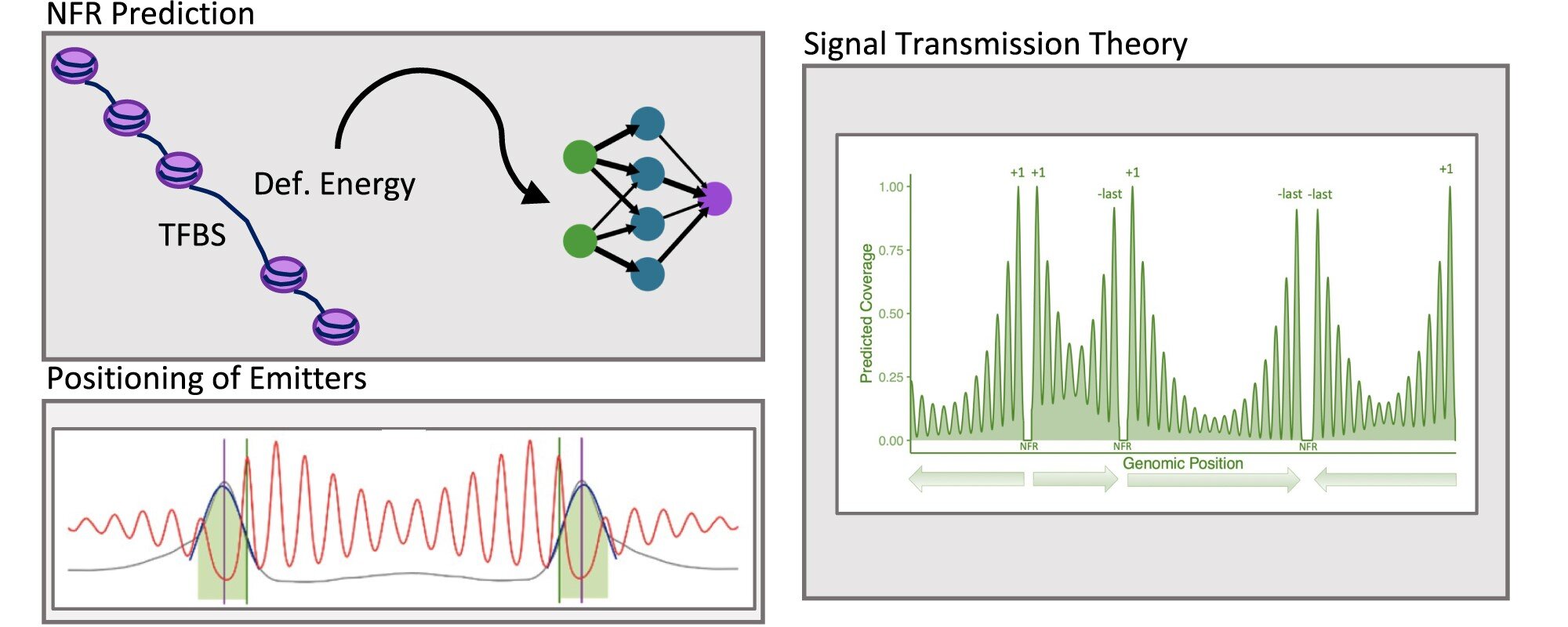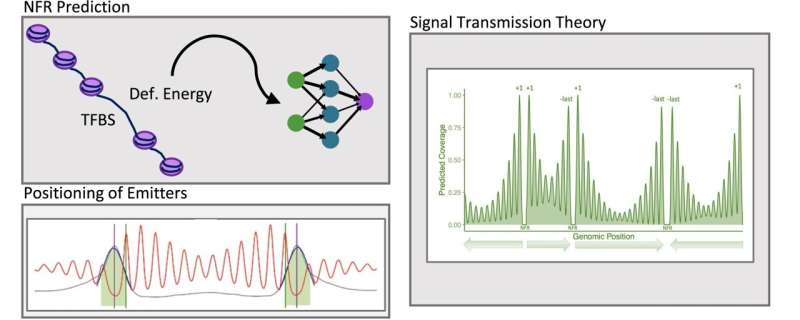

DNA—the molecule that carries the genetic information of all living organisms—is packaged within cells in a complex manner that allows it to function efficiently. Nucleosomes facilitate DNA compaction and also play a crucial role in regulating gene expression and other biological processes.
A team of scientists led by Dr. Modesto Orozco at IRB Barcelona has developed an advanced computational technique to predict gene architecture through nucleosome position. The method combines experimental approaches with machine learning techniques and signal transmission theory. The study has been published in the journal Nucleic Acids Research.
A predictive model that rivals experimental methods
Over the past few years, scientists have used experimental techniques such as MNase-seq to map nucleosomes. The model developed by Dr. Orozco´s team uses DNA sequence information and physical characteristics not only to reproduce experimental data, but also to predict nucleosome locations more quickly and accurately.
“The precision of our model is comparable with that of the most advanced experimental methods,” says Dr. Orozco, head of the Molecular Modelling and Bioinformatics lab at IRB Barcelona and Full Professor at the University of Barcelona.
Implications for gene regulation and biomedicine
The study demonstrates that nucleosomal architecture is greatly influenced by the DNA sequence and physical signals that are emitted by the ends of the genes. These signals determine the location of the first and last nucleosomes (+1 and -last) and also affect the position of the nucleosomes along the gene.
“Our work suggests that nucleosome structure may impact gene expression in ways that are more complex than we thought,” adds Alba Sala, Ph.D. student at IRB Barcelona and first author of the study.
This approach is key for future research on how alterations in chromatin structure can influence the onset of diseases. By better understanding the organization of DNA and nucleosomes, scientists can identify new therapeutic targets and develop more effective treatments.
More information:
Alba Sala et al, An integrated machine-learning model to predict nucleosome architecture, Nucleic Acids Research (2024). DOI: 10.1093/nar/gkae689
Provided by
Institute for Research in Biomedicine (IRB Barcelona)
Citation:
Advanced model predicts gene architecture via nucleosome position (2024, October 10)
retrieved 10 October 2024
from https://phys.org/news/2024-10-advanced-gene-architecture-nucleosome-position.html
This document is subject to copyright. Apart from any fair dealing for the purpose of private study or research, no
part may be reproduced without the written permission. The content is provided for information purposes only.